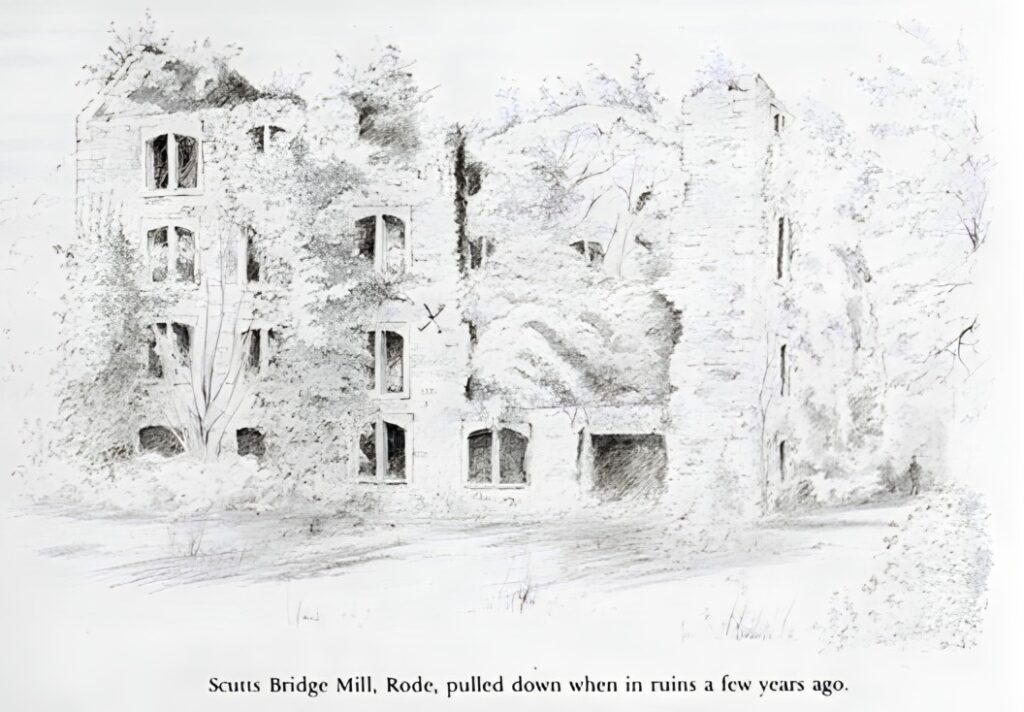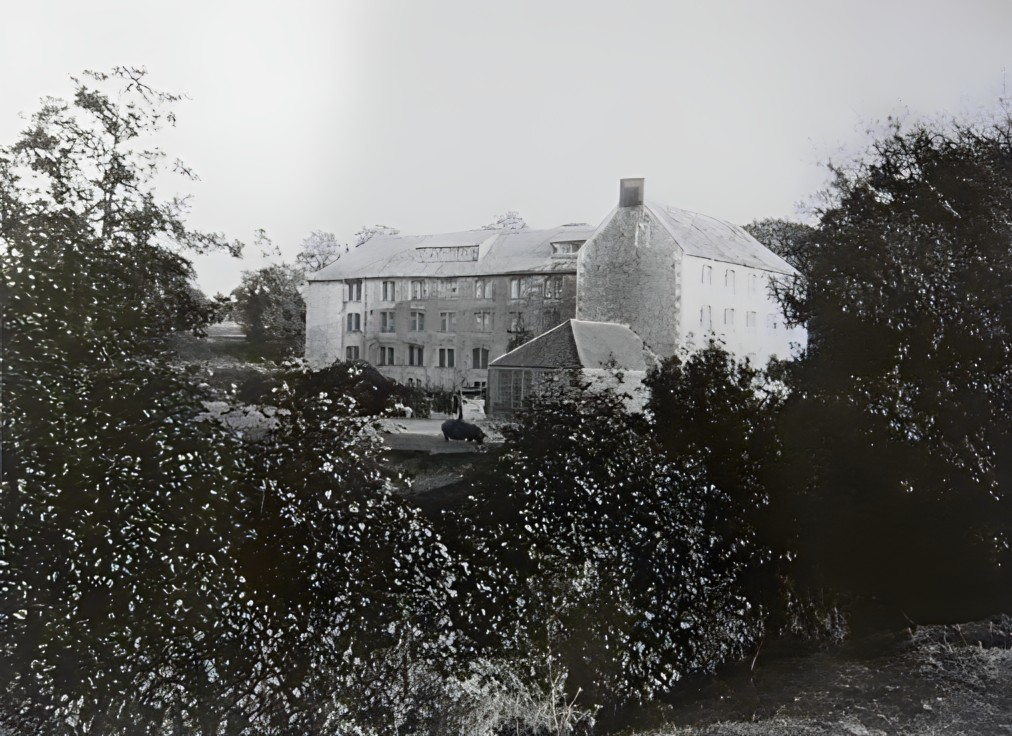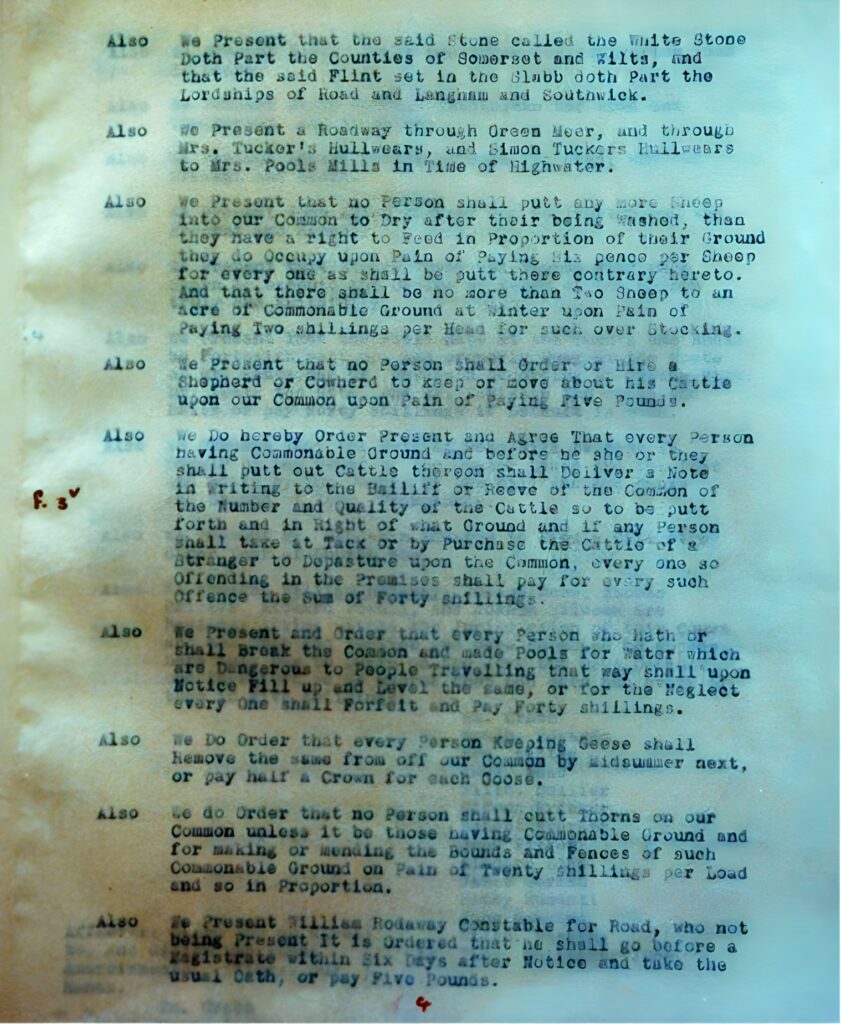Extract from Wool and Water 1975 by K G Ponting:

The Origin of “Royal Blue”
The following was provided by Harry Hopkins in response to a question about the origin of the colour Royal Blue and its connection with Rode:
The Mill in question was the Scutt’s Bridge Mill then called ‘Rocabella’ where cloth for the Royal Liveries was made.
George 111 challenged clothiers nationwide to produce a colour good enough for Royalty use and this Mill produced the very best richest blue and it was selected for a robe for Queen Charlotte. The colour became known as ‘The Royal Blue’ and King William 4th gave a certificate authorising its sale by that name.
The Batten Family owned this Mill, then the Poole Family and they were still there in 1816 according to the Mill Return of that year. George Hunchcliffe then acquired it and in 1886 it was bought from him by R H Batten Poole of Rode Manor fame.
The following is a version of the above edited by Peter Harris:
The Mill in question was the Scutts Bridge Mill where cloth for the Royal Liveries was made.
King George 3rd (1760 to 1820) challenged clothiers nationwide to produce a colour good enough for Royalty use and this Mill produced the very best richest blue and it was selected for a robe for Queen Charlotte. The colour became known as ‘The Royal Blue’ and King William 4th (1830 to 1837) gave a certificate authorising its sale by that name.
The Batten family owned this Mill, then in the early 1800s the closely related Poole family. Henry and Thomas Poole were still there in 1839 according to the Tithe Apportionment of that year. They had become the major land owners in the village and also owned Northfield House, later rebuilt as Rode Manor by their successor, squire Robert Pooll Henry Batten Pooll.
Scutts Bridge Mill continued to operate until c1904 and is thought to be the last water driven factory manufacturing cloth.

Email written by Peter Harris 15 Sep 2018
I understand you met Peter Travis at the Mill in Rode recently and you are interested in the origins of the colour Royal Blue.
I was told about 10 years ago by another amateur village historian that the colour Royal Blue arose from George iii (1760/1820) challenging clothiers to produce a cloth fit for Royalty. The winner was Scutts Bridge Mill, in Rode, and it was selected for a robe for Queen Charlotte. The colour of the winning cloth became known as Royal Blue and William iv (1830/37) authorised its sale by that name.
At the time I got the impression that the story was common knowledge in the village and I didn’t question it. I put it on the Rode Village History website, and this is now quoted by Wikipedia.
I have just checked with a local who says he thought he was taught about it at the village school (c1960). However, having looked at several books of the 1960s and 70s on the local cloth making industry, by knowledgeable authors, I can find no mention of such an important event for the area. So, I’m not sure what to believe, although a newspaper report of 1764 stated that Thomas Whitaker of Rode Bridge Mill was one of the greatest clothiers and most noted blue dyers in all the West of England.
To answer the specific question about the source of the dye, I have found the following in History of Roadhill 1881 by A Farquarson:
The Genistella Tinctoria is found in the neighbourhood, and is known by the poor people by the name of Woad Wax. They collect it for the dyers, who buy it at 3s per cwt; but some years since, the poor, who gathered it, could make as much as 6s. per cwt.
Having googled the above I find Woad (Isatis Tinctoria) is the blue dye and Woad Wax is a yellow dye which is mixed with Woad to make a green dye. Presumably several dyes would have been mixed together to make Royal Blue.
I hope this goes some way to answering your question but please let me know if you have any further queries.
